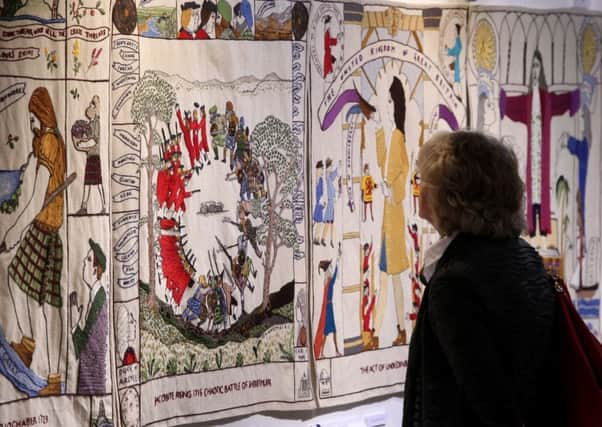Railway impact on tapestry investigated


This was stated by Councillor Stuart Bell (SNP), executive member for economic development, after meeting with Scottish culture minister Fiona Hyslop MSP.
The meeting, also attended by SBC leader David Parker and chief executive Tracey Logan along with tapestry trustee Alistair Moffat, had been requested after Ms Hyslop revealed she had asked in January for a “fully revised business case” for the Tweedbank project before funding of £2.5m – from the Scottish Government’s railway blueprint programme – could be sanctioned and released.
Advertisement
Hide AdAdvertisement
Hide AdThis was conveyed in a letter from Ms Hyslop to local MSP Christine Grahame on February 11 – the same day the council voted down a Conservative motion to scrap its £3.5m capital commitment to the building.
Referring to his meeting with Ms Hyslop, Coun Bell said: “There is no commitment to producing a further, fully revised business case…The Cabinet Secretary confirmed she is committed to delivering a successful project in the Borders and we have now agreed a due diligence process which will enable this council to give the appropriate level of assurance to allow the funding to be released.
“We expect to be able to complete this process in the coming weeks.” Mr Logan asked for an assurance no construction work would begin at Tweedbank until the revised business case had been debated by the council.
He was told by Mr Bell: “I can give no such assurance because there will be no revised business case, rather a process of due diligence on a case which will include additional information on the significant positive impact [on the project] of the Borders Railway.” This is not unreasonable.”
Advertisement
Hide AdAdvertisement
Hide AdCoun George Turnbull asked if the tapestry project would be aborted if the Scottish Government did not come up with the £2.5m.
“That is likely to be the outcome,” said Mr Bell. “It would continue to be crucial to consider what we would do to address the need for tourist and visitor facilities at Tweedbank. If we are to maximise the potential economic benefits of the railway as in the blueprint to which we are co-signatories, then we urgently need facilities at Tweedbank which celebrate and signpost what we have to offer throughout the region.”